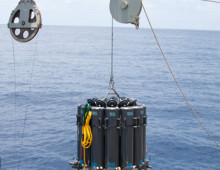A Novel Technique for Studying Nitrifiers
Ammonia-oxidizing bacteria and nitrite-oxidizing bacteria (AOB and NOB) catalyze nitrification and are key drivers of the nitrogen cycle. As nitrification is an important step of nitrogen removal from sewage, AOB and NOB are essential bacteria in most wastewater treatment plants. However, both groups are understudied as most nitrifiers are uncultured and the few cultured strains… [Read More]
